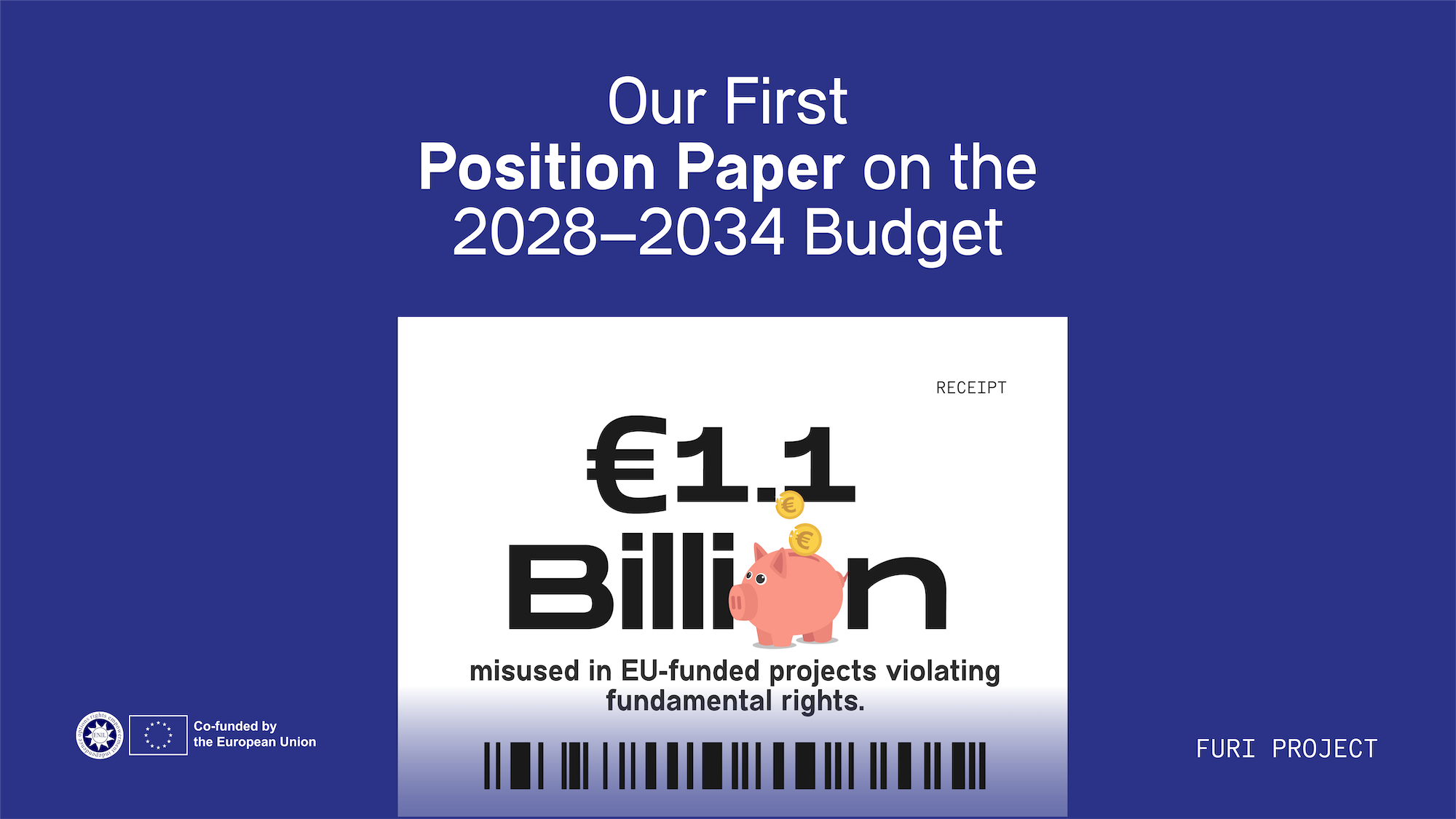ENIL managed to shape key passages in the resolution “towards equal rights for disabled people.” Consequently, the European Parliament now supports a decisive shift from institutional to community-based support for disabled people. The following overview is meant to provide evidence for ENIL´s role by comparing key documents.
Florian Sanden, Policy Coordinator, florian.sanden@enil.eu
On December 13 the European Parliament adopted a resolution titled “towards equal rights for persons with disabilities”. The document which is written in a very clear and direct language, asks Member States and the European Commission to increase efforts in implementing the UNCRPD and protecting the rights of disabled people. The resolution also calls for more efforts in setting the legal conditions to ensure Independent Living. For example, the European Parliament: 1. Calls for a rapid phase out of institutional care settings, a shift to community-based services, including personal assistance, all involving the adoption of deinstitutionalization strategies, 2. Stressed that segregated settings, regardless of their size should not be financed by EU funds, calls for stricter monitoring by the Commission, a reform of enforcement practices and for stricter provisions in the Common Provisions Regulation, prohibiting the spending of EU funds on institutions, 3. Calls on the Commission to revise the Employment Equality Directive and on the European Labour Authority to take a role in implementing legislation supporting disabled people in the labour market.
The European Parliament resolution is very much in line with ENIL´s positions, as for example formulated in the 2022 Freedom Drive Demands, which centered on the topics 1. Personal assistance and deinstitutionalization, 2. The role of EU funds in financing institutions and community-based services, 3. Disability and employment.
The leadership in writing the equal rights resolution was held by Member of the European Parliament Anne-Sophie Pelletier of the Left Group, acting as rapporteur. Between June and October 2022, ENIL sent materials to two sets of actors in the European Parliament. On June 8 received a request from the Green Party Group in the European Parliament, asking for input to the draft EMPL report. On June 9, the draft report was returned, containing various new paragraphs, added with track-changes (track-changes input). On September 15 the ENIL Freedom Drive Demands, containing detailed policy recommendations were sent to MEP Pelletier and to the shadow rapporteurs.
ENIL managed to shaped the following paragraphs:
1. Background information data
1.1. Input supplied by ENIL
The input provided to the European Parliament on June 9 reads:
“whereas a decade after the EU became party to the UNCRPD the level of institutionalisation remains unchanged. The ENIL shadow report, which was published in February 2022, found that across Europe, at least 1.4 million people are still confined to institutions—a number which has remained unchanged since the adoption of the convention.”
“whereas according to part I of the ENIL Independent Living survey 24 out of 43 countries in the Council of Europe area do not have a deinstitutionalization strategy. For the 18 countries which do have one, 88% of respondents describe the strategy either as inadequate or requiring improvement.”
“whereas 33 countries in the Council of Europe area provide some kind of personal assistance while 97% of respondents indicate that access is either requiring improvement or inadequate.”
1.2. The European Parliament resolution
Paragraph AI and AJ of the resolution read:
“Whereas a decade after the EU became a party to the CRPD, the level of institutionalisation remains unchanged; whereas across Europe, at least 1,4 million people are still confined to institutions, a number that has remained unchanged since the adoption of the convention; whereas according to the European Network on Independent Living´s 2020 survey on independent living, 24 out of 43 countries represented in the Council of Europe do not have a deinstitutionalisation strategy, and for the 18 countries that do have on, 88% if respondents have described the strategy as either inadequate or requiring improvement.”
“Whereas 33 countries in the Council of Europe provide some kind of personal assistance, while 97% of respondents have indicated that access is either inadequate or requires improvement.”
The text comparison shows the passages in the European Parliament resolution were supplied by input from ENIL.
2. Deinstitutionalisation strategies
2.1. Input supplied by ENIL
In our ENIL Freedom Drive Demands deinstitutionalisation strategies held a prominent position. Section 2 titled “end institutionalisation of disabled people” states:
“According to General Comment No 5, all countries that ratified the UNCRPD should “adopt clear and targeted strategies for deinstitutionalisation”. Strategies or plans of action for deinstitutionalisation should contain “specific time frames and adequate budgets, in order to eliminate all forms of isolation, segregation and institutionalisation of persons with disabilities”.”
“Deinstitutionalisation strategies or plans should be legally binding, and in line with the UNCRPD and General Comment No 5. They should include, among other, specific time frames and adequate budgets, and they should be written together with disabled people and their organisations.
“The European Union should collect information on the number of disabled people living in institutions”
The track-changes input reads as follows:
“Emphasises that all EU countries need to implement adequate plans of action for deinstitutionalisation and the introduction of independent living. Such plans have to contain specific objectives, fixed timeframes as well as the necessary resource commitments.”
2.2. The European Parliament resolution
The first chapter in the equal rights resolution has the title “Living independently and being includ-ed in the community”. Paragraph 2 reads as follows:
“Calls on the Member States to adopt deinstitutionalisation strategies and to ensure that their laws, policies and programmes on deinstitutionalisation are in line with the concept of independent living set out in the CRPD; calls on the Commission to use benchmarks in order to measure progress in this regard … calls on the Member States to include specific targets with a defined time frame in their deinstitutionalisation strategies, adequately finance them and develop mechanisms to ensure effective coordination between the relevant authorities across different adminis-trative sectors and levels;”
The text comparison shows that the wording in the equal rights resolution is very close to the suggestions proposed by ENIL.
3. Employment
3.1. Input supplied by ENIL
Chapter IV of the 2022 ENIL Freedom Drive Demands “Reducing the Disability Employment Gap” reads:
“In addition, the European Labour Authority (ELA) should cooperate with national labour inspectorates to encourage ex-ante investigations into implementation of the Directive; or, it should be able to carry out such inspections itself.”
“Revise the Employment Equality Directive, to bring it in line with the UNCRPD. For example, the Directive should include clear definitions and guidelines on direct and indirect discrimination, as well as reasonable accommodation.”
The track-changes input states the following:
“The European Labour Authority should work with national labour inspectorates to implement existing legislation. Public and private employers should be randomly inspected to ensure compliance.”
“Strengthen the legal protections against employment related discrimination. Improve access to reasonable accommodation, notable by reforming directive 2000/78/EC, the employment equality directive.” The input supplied by ENIL and the passages in the equal rights resolution display a close resemblance.
3.2. The European Parliament resolution
Paragraph 69 of the chapter “Promoting inclusive employment” reads:
“Asks the European Labour Authority to work with national labour inspectorates to implement existing legislation, recommends that labour inspectorates monitor public and private employers to ensure compliance with occupational rights for people with disabilities;”
“Calls on the Commission to start the revision of the Employment Equality Directive as soon as possible, in particular as regards harmonised minimum standards for reasonable accommodations for workers with disabilities, with a view to fully harmonising it with the provisions of the CRPD”
The text comparison shows that the wording in the equal rights resolution is very close to the suggestions proposed by ENIL.
4. EU funding
4.1. Input supplied by ENIL
Chapter 3 of the Freedom Drive Demands state:
“The European Commission should use all instruments at its disposal to enforce the ban of investments of EU funds into all types of institutional settings. To this end, it must closely monitor national spending plans and eliminate all forms of spending on institutions from programmes on the national and the European level. The Commission should intervene and shut down all ongoing projects that fail to promote deinstitutionalisation.”
“To this end, regulations governing the use of EU funds should be drafted in such way to contain a clear ban on spending on institutions of all sizes, including group homes.”
4.2. The European Parliament resolution
Paragraph 7 in the chapter “Living independently and being included in the community” reads as follows:
“Urges the Commission to improve its monitoring on the use of EU funds in this policy area, including considering the suspension withdrawal and recovery of payments if the obligation to respect fundamental rights is breached; stresses that segregated settings, regardless of their size should not be financed with EU funds,”
Paragraph 8 states:
“calls, therefore, for stricter provisions prohibiting the investment of EU funds into institutional care settings;”
The input supplied by ENIL and the passages in the equal rights resolution display a close resemblance.
5. Personal assistance and community-based services
Paragraph 1 in the chapter ““Living independently and being included in the community” states:
“calls on the Commission and the Member States to phase out institutional care settings for person with disabilities as soon as possible, as set out in General Comment No. 5 by the CRPD Committee and bring about a shift from institutional and other segregated settings to a system enabling social participation where services are provided in an accessible community, taking full account of the individual needs, will and preferences of persons with disabilities,including community-based care,”
Paragraph 6 says:
“Insists that the relevant EU funds should aim to promote inclusive, accessible environments, services, practices and devices, following a universal design approach and favouring deinstitutionalisation, including strong support for personal assistance and independent living:”
Paragraph 68 reads:
“Encourages the Commission and the Member States therefore to take effective and concrete measures to promote equality, diversity and horizontal inclusion of persons with disabilities and their families in parts of society, inter alia, through personal assistance, independent living, social protection, awareness-rising and a barrier-free environment”.
When it comes to personal assistance, ENIL´s influence was not as clear cut as for the other topics. Still personal assistance most likely featured more prominently that it would have without our contributions.
6. Conclusion
ENIL managed to shape key passages of the European Parliament resolution. Consequently, the resolution supports many of our policy objectives. The resolution contains further passages which are in line with our position but could not have been influenced by us because we provided no input on the matter. Out of 50 MEPs who took part in the final vote in the Committee for Employment and Social Affairs, 44 voted in favour of the resolution. It will be important to highlight the majority support in the European Parliament, when promoting our positions in the debates to come.



